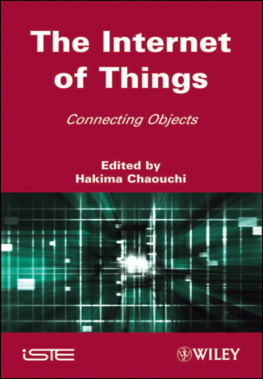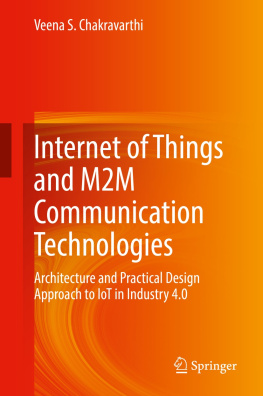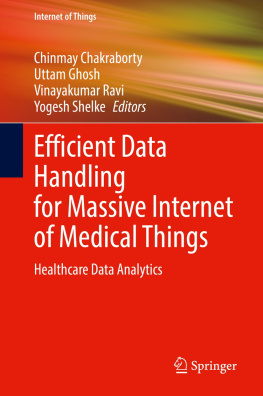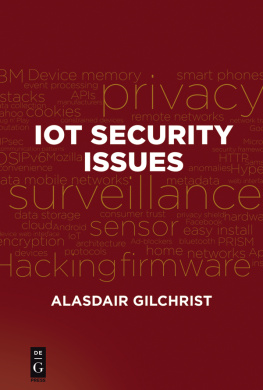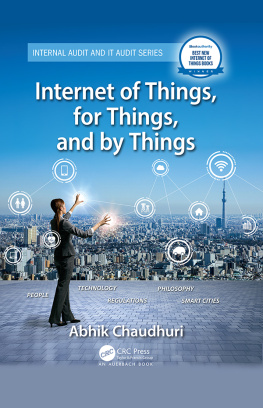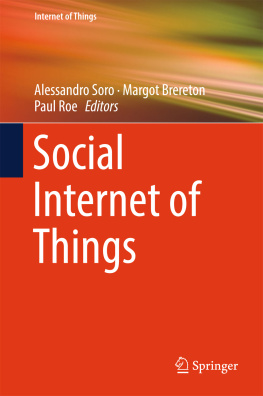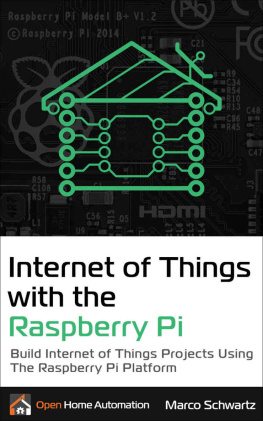Table of Contents
First published 2010 in Great Britain and the United States by ISTE Ltd and John Wiley & Sons, Inc.
Apart from any fair dealing for the purposes of research or private study, or criticism or review, as permitted under the Copyright, Designs and Patents Act 1988, this publication may only be reproduced, stored or transmitted, in any form or by any means, with the prior permission in writing of the publishers, or in the case of reprographic reproduction in accordance with the terms and licenses issued by the CLA. Enquiries concerning reproduction outside these terms should be sent to the publishers at the undermentioned address:
ISTE Ltd
27-37 St Georges Road
London SW19 4EU
UK | John Wiley & Sons, Inc.
111 River Street
Hoboken, NJ 07030
USA |
| www.iste.co.uk | www.wiley.com |
ISTE Ltd 2010
The rights of Hakima Chaouchi to be identified as the author of this work have been asserted by her in accordance with the Copyright, Designs and Patents Act 1988.
Library of Congress Cataloging-in-Publication Data
The Internet of things : connecting objects to the web / edited by Hakima Chaouchi.
p. cm.
Includes bibliographical references and index.
ISBN 978-1-84821-140-7
1. Ubiquitous computing. 2. Computer networks. 3. Radio frequency identification systems.
I. Chaouchi, Hakima.
QA76.5915.I67 2010
004--dc22
2010003706
British Library Cataloguing-in-Publication Data
A CIP record for this book is available from the British Library
ISBN 978-1-84821-140-7
Services designed over the Internet evolved depending on the needs identified from person-to-person interaction, such as email or phone services to meet other interactions, such as person-to-machine, machine-to-person and, lately, machine-to-machine where no human interaction is needed; thus building ubiquitous and pervasive computing. Such a computing system started a long time ago with the ambition of offering all-pervading computing to automate tasks and build a smart world. Introducing radio-frequency identification (RFID) technology in building new services over the network has pushed what is called the Internet of Things (IoT) as a meeting point between the real world and the virtual world, especially when combined with other technologies, such as sensor technology or mobile communication.
IoT appears to be one step further on the path to ubiquitous computing. This is possible with the introduction of RFID or sensor technologies, but also other technologies such as robotics, nanotechnology and others. These technologies make the Internet of things services an interdisciplinary field where most of the human senses are somehow reproduced and replaced in the virtual world.
So, what is meant by the Internet of things? From the economical point of view, it is about designing new services and generating new revenue streams in the communication value chain. This is not straightforward however, as lots of technical issues have been raised that need to be solved before an effective deployment of the new envisioned services. From the technical point of view, it is about connecting new devices, called objects or things, and investigating the issues related to connecting these objects with the network in order to develop exploitable applications. To tackle these issues, it is important to understand what the Internet and things mean in the IoT, knowing that, depending on the research community, the meaning and the related issues might be different.
A thing or an object in the IoT is described as any item from our daily life that is enhanced with some computing and/or communication capabilities. For instance, items or objects with RFID or sensor technologies will become connected objects. These objects, depending on the application, might range from a size as small as an atom or as large as a building; they might be fixed or mobile, such as a car; they might be inanimate or animate, such as animals or humans. These objects joining an IoT service will have an electronic identification, such as an RFID. Objects or things are also new electronic devices interacting with the real-world environment, such as sensors.
Conventional communicating devices, such as laptops, computers and phones might be considered to be objects. In our book, we exclude these classical devices from the object list since they do not directly enable interaction with the real-world environment. Other objects, such as consumer electronic products like a TV or a fridge have already been introduced in the communication chain via other technologies, such as power line communication technology. IoT will clearly have to allow the connectivity of a large number and different types of objects. This means that it has to face the heterogenity and scalability of the communication framework in order to build the envisioned applications. These applications will orchestrate the real environment-related new functionalities of identifying, locating, sensing and acting, thus building the task automation and environmental task monitoring expected by the IoT.
Currently RFID technology and sensor technology are promising, very close-to-market applications, since they offer the new functionalities of identifying and sensing, respectively. Sensor technology and sensor networks for phenomenon monitoring have interested the telecommunication research community earlier than RFID technology, which evolved in the retail product chain for product tracking and only recently joined the telecommunication value chain. Some recent examples show the development of RFID-based systems to help vision-impaired people to be guided on buses and enhance museum visits with smart phones and RFID. Combining RFID, sensor, and mobile communications appears to be very promising and will enable more applications to contribute in building the IoT. Although already used, these technologies need to be improved from security, privacy, performance and scalability points of view.
On the other hand, the Internet in the IoT might also have different interpretations. The obvious interpretation, which is more direct, refers to the current Internet adapted to these new objects connectivity needs. Current Internet is that of connected nodes using a TCP/IP (the internet protocol suite) protocol stack with IP addressing and routing capabilities. Usually, the Internet model runs a TCP/IP stack in the connected device or offers the possibility of designing corresponding gateways to specific nodes or networks.
Connecting objects to the current Internet involves adapting the TCP/IP stack to the resources of the objects. This is what is proposed by the Internet Engineering Task Force with the 6LoWPLAN protocol stack for sensor networks. It also means designing gateways connecting the objects to the Internet, as might be done with connecting RFID objects to the Internet via gateways.
Another view of the IoT involves designing a new communication model, different from TCP/IP. This would be a new Internet, also called future Internet, where it is possible to adapt the communication model to the context, traffic constraints, resource limitations and so on. Note that designing the network of the future (or future Internet) is one of the major research goals of the current networking research community, where better network adaptation than the current Internet is expected.
In the long run, the IoT appears to be one of the leading paths to this goal since it challenges the current Internet model with new needs of object connectivity: such as identification, naming and addressing, scalability, heterogenity, resource limitation, new traffic modeling, etc.

